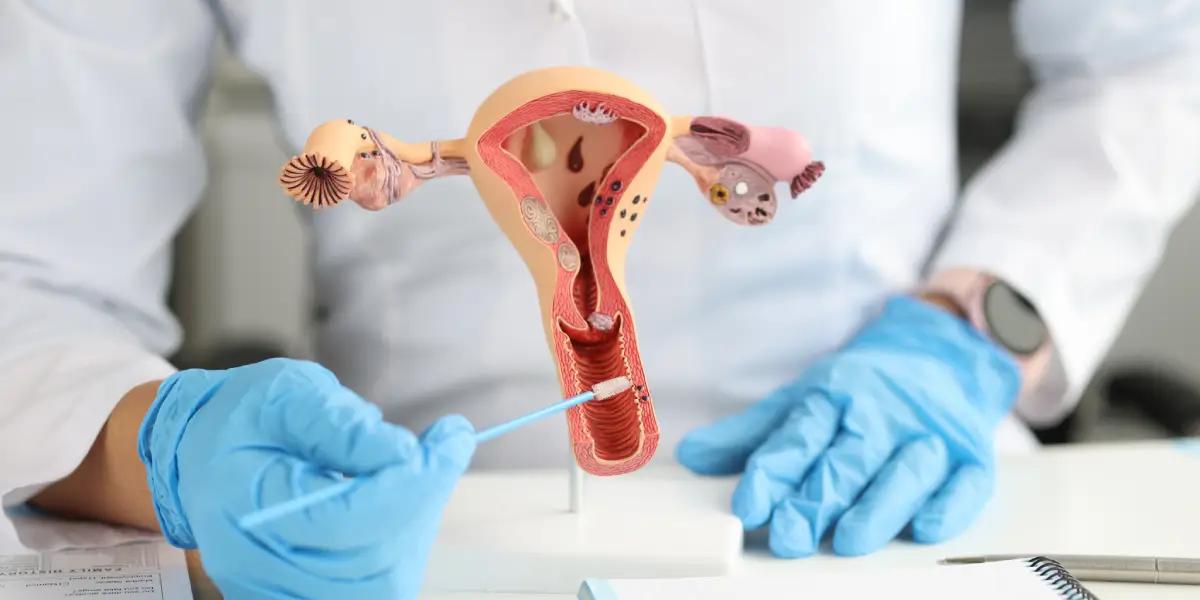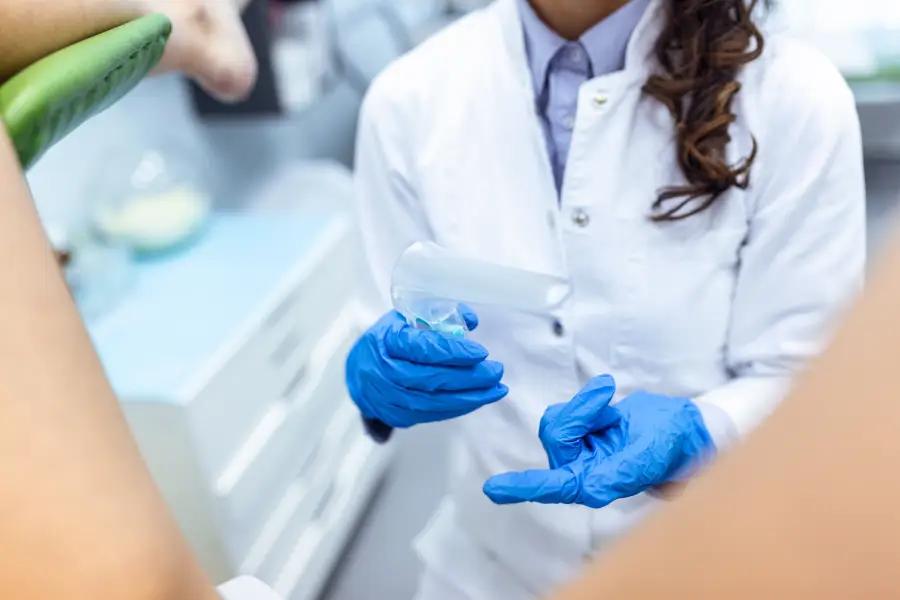
What is a Cervical-vaginal smear?
The Cervical-vaginal smear or Pap smear is a medical examination that involves collecting samples of secretions from the cervix and vagina in women. These samples are then analyzed in the laboratory to look for bacteria or abnormal cells that could cause health issues. It is a way to check if everything is okay and to prevent diseases.
Why is the Cervical-vaginal smear so important for women's health?
The CVS plays a key role in the early detection of several medical conditions that can impact reproductive health. Here are some reasons why it is so important:
- Early detection of Cervical Cancer: Suspicious cellular changes are quickly identified, leading to an early diagnosis of cervical cancer. Regular screening can save lives by enabling prompt and effective management.
- Effective screening for Sexually Transmitted Infections (STIs) such as chlamydia, gonorrhea, and human papillomavirus (HPV), allowing for early treatment and preventing potentially serious complications.
- Monitoring bacterial or fungal infections (e.g., Trichomonas vaginalis, yeast infections) that could cause uncomfortable symptoms or recurrent infections.
- For women who have been treated for an infection or condition, the Pap smear can be used to monitor the effectiveness of the treatment and ensure that the infection has been successfully eliminated.

Conditions to follow before undergoing a Pap smear examination
To ensure the reliability of the results, it is important to adhere to certain conditions before undergoing the examination:
Sample collection at the laboratory
Ideally, the sample should be collected at the laboratory, where conditions are optimal for a precise and swift analysis of the samples. If this is not possible, the samples should be promptly transported to the laboratory after collection.
Avoid intimate hygiene before vaginal collection
Performing intimate hygiene before the examination may disrupt the collected samples, thereby compromising the precision of the analysis. Indeed, intimate hygiene can alter vaginal pH, modify the appearance of the cervix, and reduce the quantity of leukorrhea, which are crucial elements for assessing genital health.
Moreover, engaging in intimate hygiene can introduce new germs into the genital tract, potentially distorting the results of the Cervical-vaginal smear. Variations in the vaginal environment can also alter the shape of bacteria and reduce microbial density, making the interpretation of results more complex.
To ensure the reliability of the Pap smear and enable a thorough analysis, it is essential to refrain from intimate hygiene before the examination. This will guarantee high-quality samples and provide healthcare professionals with valuable information to optimally assess your genital health.
It is strongly recommended to follow these guidelines to maximize the effectiveness of the Cervical-vaginal smear and benefit from an accurate evaluation of your genital health. Cooperation in this process will significantly contribute to the preservation of your well-being and ensure appropriate medical care when needed.
Sexual abstinence 24 hours before the examination
When engaging in sexual intercourse with penetration, the semen introduced into the vagina may have a different pH than that of the vagina itself. The pH of the vagina is normally slightly acidic, around 4.5, creating a favorable environment to prevent infections and maintain a healthy balance of vaginal flora.
However, semen has a basic pH, and when these two pH levels mix after sexual intercourse, it can temporarily alter the vaginal pH. This change may disturb the natural vaginal environment and make interpretation difficult.
Additionally, the use of male or female condoms can cause irritations in the vagina and at the cervix. These irritations could be misinterpreted as signs of lesions or infections, leading to inaccurate results.
Following this guideline is therefore essential to benefit from effective screening and maintain good intimate health.
Report your ongoing treatments
It is crucial to report any ongoing treatments, especially antifungal or antibacterial treatments, as they can alter the sample bacteria.
Avoid the menstrual period
It is preferable to wait three days after menstruation because it can alter vaginal pH and disrupt bacterial flora, potentially leading to inaccurate results.
How to perform a Cervical-vaginal smear for women?

The Cervical-vaginal smear is a relatively simple and quick examination, typically conducted during a routine visit to a gynecologist or healthcare professional. Here are the typical steps of the examination:
Step 1: Examination
Once the patient is ready, the healthcare professional inserts a small instrument, called a speculum, into the vagina to widen the opening of the cervix. They then collect small samples of secretions using a special brush or swab.
Step 2: Laboratory Analysis
The collected samples are sent to the laboratory for analysis. Laboratory technicians examine the samples for abnormal cells, signs of infections, or other indications of health issues.
Step 3: Results
Once the results are available, the healthcare professional informs the patient about the findings of the examination. In case of abnormal or positive results, further tests or appropriate treatment may be recommended.
What to remember
The Cervical-vaginal smear is a crucial medical examination for the early detection of infections, conditions, and abnormalities in women. This examination should be conducted under specific conditions. By regularly undergoing this examination, women can safeguard their reproductive health and access preventive and curative care if necessary. The Pap smear is a simple and effective preventive measure that contributes to preserving the health and well-being of women throughout their lives. Feel free to consult your healthcare professional for additional information on the Pap smear and its importance for your health. Take care of yourself and your women's health.
Do you have any questions about your health?
Feel free to ask us your questions for free by clicking the button below.



